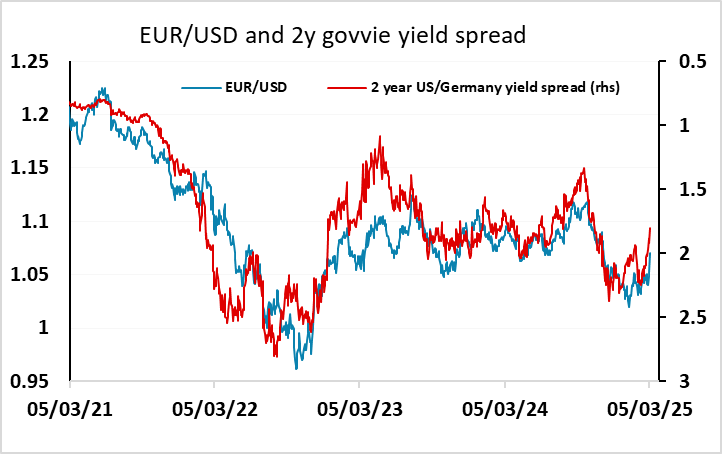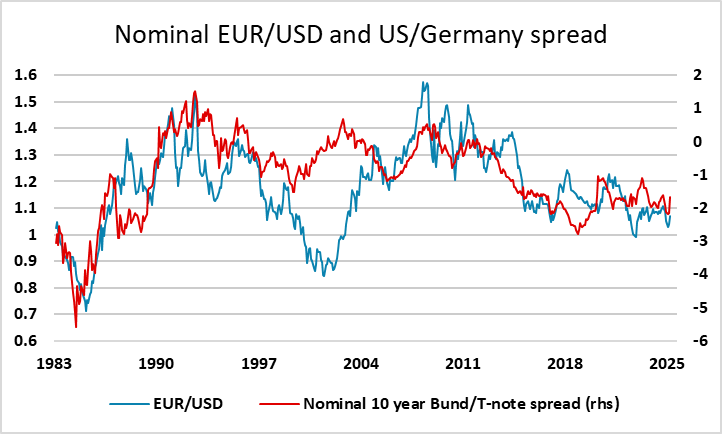EUR flows: EUR gains strongly as EUR yields rise
EUR benefiting from potential release of the German debt brake and increased European defence spending.
The EUR is benefitting from a very large rise in German yields this morning in response to the plans announced by Germany’s likely new Chancellor Friedrich Merz to amend the country’s constitutional fiscal restraints - the so-called debt brake - within the confines of the current parliament. The plan is a marked shift in Germany’s traditionally conservative fiscal stance and where the debt brake has been enforced in its constitution in 2009, which limits government borrowing and keeps the structural deficit at 0.35% of GDP.

In detail, the proposal is that defence spending above 1% of GDP be exempted from the restrictions of Germany’s constitutional debt brake. Merz announced the plan on spending alongside the leaders of the Social Democratic Party (SPD), with whom his conservatives are currently in talks to form a governing coalition, clearly suggesting they support the plan.But they still likely need to get the Greens to approve the plan before the current parliament stands down and then to get approvals from the new parliament which may be more difficult given that the far right (AfD) and Left (Der Linker) would block a 2/3 majority. The current parliament can be convened until it ends on March 25, which gives a fairly short-term timeline to the plan.

German 10 year yields are up 20bps on the day on this story, with 2 year yields up 16bps, suggesting the market expects ECB will reduce their easing plans in response to the new German and European defence spending. Over the past month the US/Germany 10 year spread has now narrowed around 50bps, taking it back to the levels in August/September last year when EUR/USD was trading near 1.10. Typically, a 50bp move in 10 year yield spreads has been worth in the order of 6 figure sin EUR/USD, so this also suggests we may have scope to the 1.10 area. The front end spreads tell a similar story.